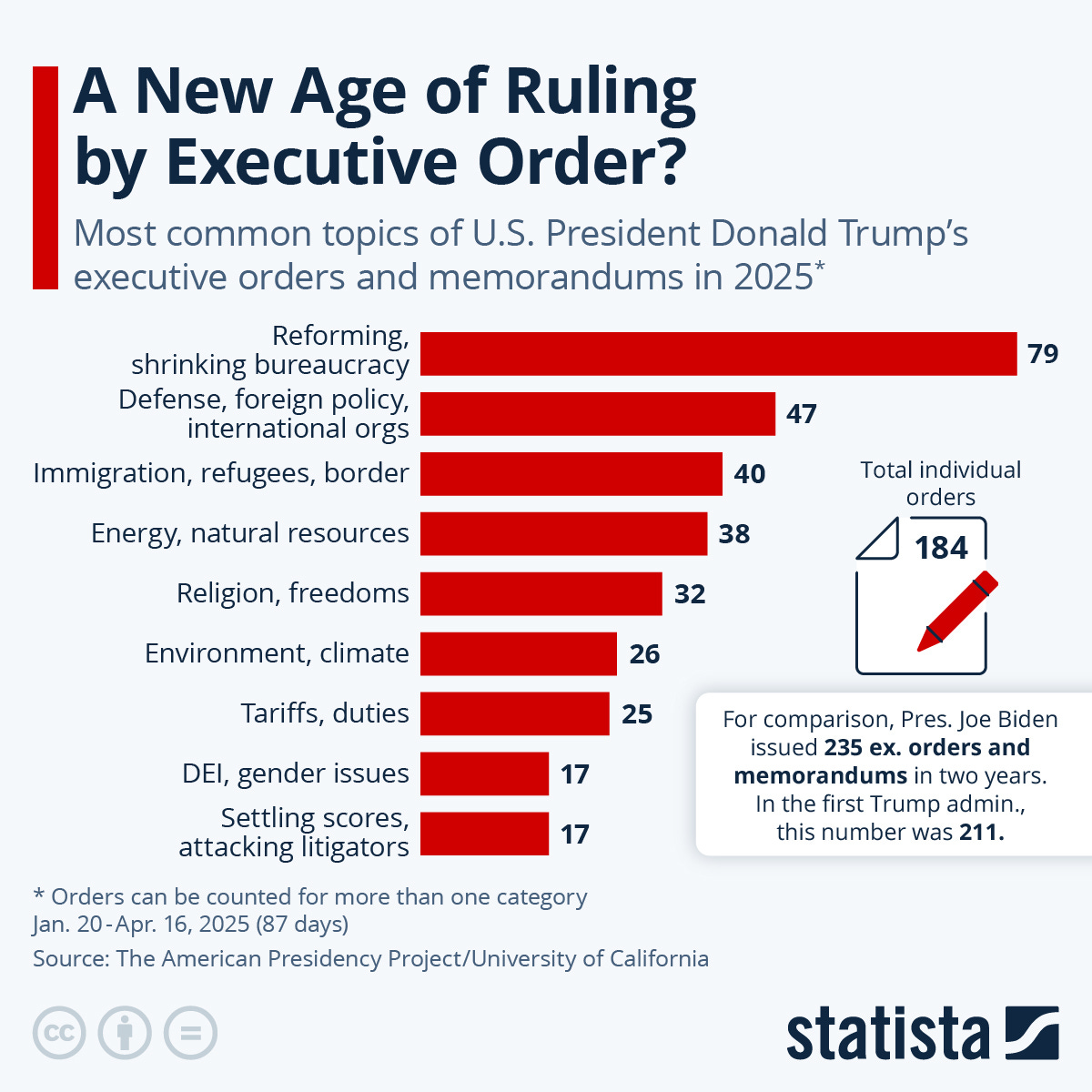The Trump Presidency at 100 Days in a Single Chart
The flurry of EOs signals an executive power grab
‘Tis the season when the media takes stock of the president. At 100 days in office, how do we evaluate the president so far? It’s a tradition dating back to Franklin Delano Roosevelt, who stormed into office during the Great Depression and sought to quickly pull the country out of its funk through a sort of shock therapy. Many presidents and pundits since have used it as a sort of early indicator of how a president is doing in office. Even so, David Axelrod, one of President Obama’s top advisors, called it a “Hallmark Holiday” – a day with lots of attention but little actual significance.
The day aside, it’s worth taking a step back to consider what the Trump administration has done in its early months in office, and what it represents. And there’s one chart that’s been making the rounds that I can’t get out of my head. It’s this one (from here at the Washington Post) on executive orders. Compared to any recent presidential administration, Trump is off the charts in terms of the number of executive orders he’s signed in his first 100 days in office.
And it’s not just recent presidents. Trump’s flurry of executive orders far outpaces every administration dating back to the time of, and including, FDR. Trump has ruled from the Oval Office to a greater extent than administrations facing the Great Depression, World War II, or the Great Recession. It’s a remarkable trend.
Trump’s executive orders aren’t just silly ones like renaming the Gulf of Mexico as the Gulf of America – although yep, that’s in there. As the chart below shows (from here), there are orders touching almost every corner of the American society and its economy. That includes radical new tariff policies (which I wrote about in a previous post), reforming the bureaucracy, freezing foreign aid, attacks on the independence of higher education (which I’ve written about here), setting new immigration rules, stripping environmental protections, and more.
Trump is running the country through his EOs. There’s a practical reason: the Republican majority in the house is razor thin. He’s had to withdraw some of his executive nominations of House Republicans in order to protect that slim majority. Trump also has longstanding interests in the policy areas that are mainly in the domain of the executive, such as immigration policy, trade, and foreign policy.
But it’s also Trump’s style to be in control and to be the point person on everything. He has made no secret of his disdain for Congress and the courts. The thought of constraints, compromise, and following the traditional rules and procedures of governing with co-equal branches of government are anathema to him.
The blizzard pace of EOs, along with their content, is challenging the checks and balances of our democracy in unprecedented ways. That is reflected in the downgrading of scores of American democracy among major global indices of democracy.
There is no reason to suspect that is going to let up. We are experiencing a period of major executive aggrandizement that could fundamentally change our system of government moving forward, even after Trump. You might think that the courts or Congress could start to put a halt to some of this as the judiciary strikes down some EOs or if Republicans lose their House majority in the midterms. Those remain possibilities. But both of those scenarios could actually cause Trump to ramp up executive action rather than to ratchet it down.





